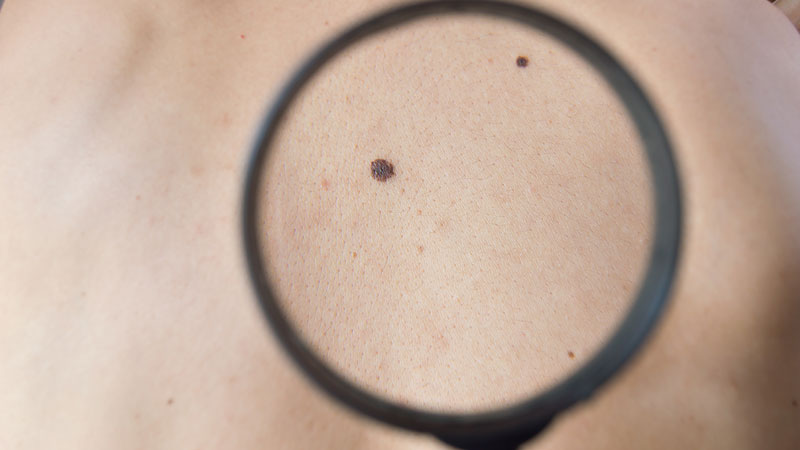Symptoms
Symptoms of Melanoma
Moles
Moles, or pigmented nevi, are clusters of pigmented cells that are often dark brown or black. Moles can be present at birth (congenital pigmented nevi) or be acquired beginning in infancy. Most moles are harmless and vary in shape and size, and some may even change shape and size without becoming cancerous.
Moles that become painful, itch, bleed, suddenly become asymmetrical, or change size, shape or color should be looked at by a dermatologist. Moles are more likely to become cancerous if they are large, atypical or if the patient has a lot of moles. Melanomas often begin at a site without a known previous mole.
The ABCDE skin guide can help you identify cancerous moles. Talk to your dermatologist if you have any concerns about your moles.
- A = Asymmetrical shape.
- B = Border: Moles with borders that are not smooth are more likely to be cancerous.
- C = Color: Look for moles with uneven color or changes in color.
- D = Diameter: Most cancerous moles are larger than ¼ inch (the size of a pencil eraser), although not all large moles are cancerous.
- E = Evolving: Look for moles that change in size or color, or become itchy and painful.



